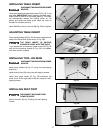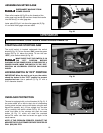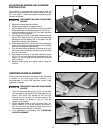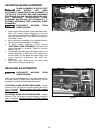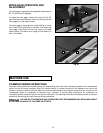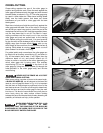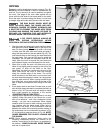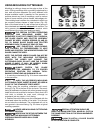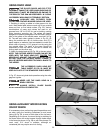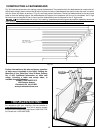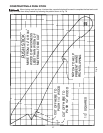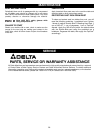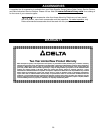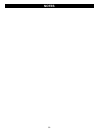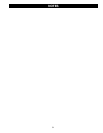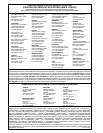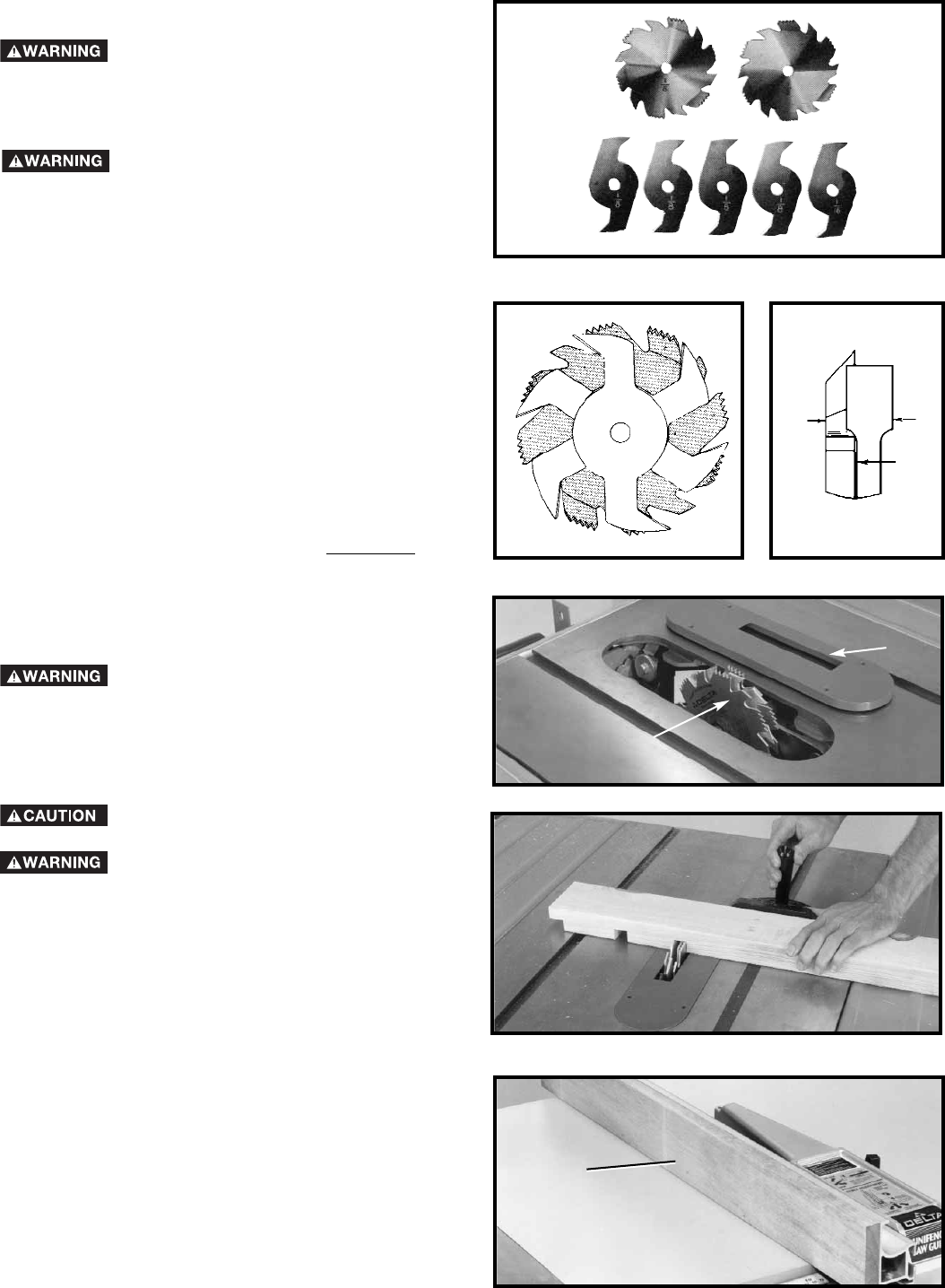
25
Fig. 56
Fig. 54 Fig. 55
Fig. 53
1. Dadoing is cutting a rabbet or wide groove into the
work. Most dado head sets are made up of two outside
saws and four or five inside cutters, (Fig. 53). Various
combinations of saws and cutters are used to cut
grooves from 1/8″ to 13/16″ for use in shelving, making
joints, tenoning, grooving, etc. The cutters are heavily
swaged and must be arranged so that this heavy portion
falls in the gullets of the outside saws, as shown in Fig.
54. The saw and cutter overlap is shown in Fig. 55, (A)
being the outside saw, (B) an inside cutter, and (C) a
paper washer or washers, used as needed to control the
exact width of groove. A 1/4″ groove is cut by using the
two outside saws. The teeth of the saws should be
positioned so that the raker on one saw is beside the
cutting teeth on the other saw.
2. Attach the dado head set (D) Fig. 56, to the saw arbor.
NOTE: THE OUTSIDE ARBOR FLANGE CAN NOT BE
USED WITH THE DADO HEAD SET, TIGHTEN
THE
ARBOR NUT AGAINST THE DADO HEAD SET BODY.
DO NOT LOSE THE OUTSIDE ARBOR FLANGE. IT
WILL BE NEEDED WHEN REATTACHING A BLADE TO
THE ARBOR.
THE ACCESSORY DADO HEAD SET
TABLE INSERT (E) FIG. 56, MUST BE
USED IN PLACE OF THE STANDARD TABLE INSERT.
3. Fig. 57, shows a typical dado operation using the miter
gage as a guide.
NEVER USE THE DADO HEAD IN A
BEVEL POSITION.
ALWAYS INSTALL BLADE GUARD
AFTER OPERATION IS COMPLETED.
USING DADO HEAD
THE BLADE GUARD AND SPLITTER
ASSEMBLY CANNOT BE USED WHEN DADOING OR
MOULDING. IT MUST BE REMOVED OR SWUNG TO
THE REAR OF THE SAW AS DESCRIBED IN “USING
ACCESSORY MOULDING CUTTERHEAD” SECTION.
AUXILIARY JIGS, FIXTURES, PUSH
STICKS AND FEATHER BOARDS SHOULD BE USED.
A
B
C
D
E
Fig. 57
Fig. 58
USING AUXILIARY WOOD FACING
ON RIP FENCE
It is necessary when performing special operations such
as when using the moulding cutterhead to add wood
facing (A) Fig. 58, to one or both sides of the rip fence.
Depending on the fence, the wood facing is attached to
the fence either with wood screws through holes drilled
in the fence (as shown in Fig. 58) or with two clamps. For
most work, 3/4" stock is suitable, although an
occasional job may require one-inch facing.
A



